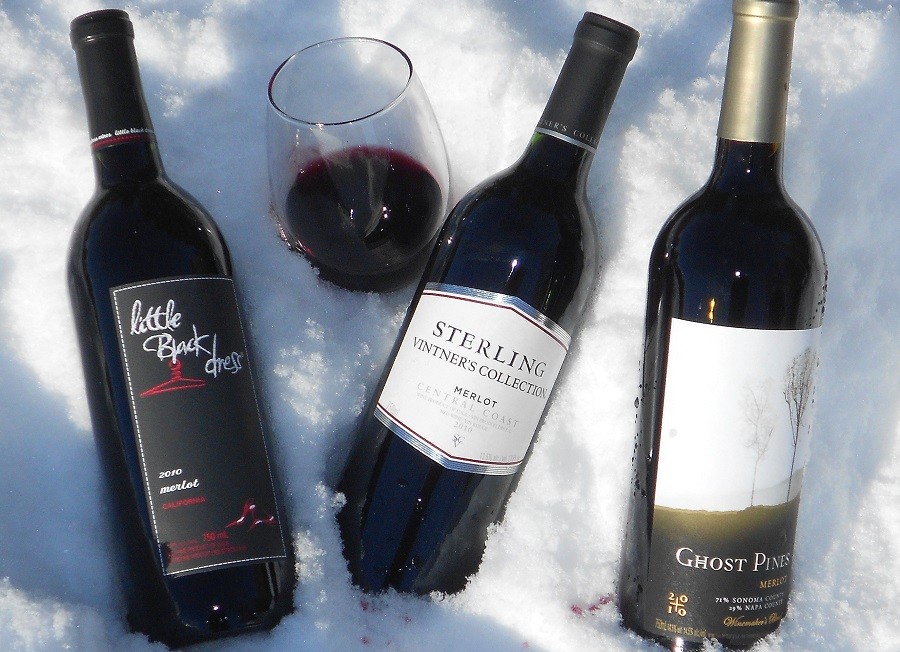Having drunk enough chardonnay to float the Love Boat, by the end of the ’80s drinkers were ready to branch out. Fruity, fun, and easier drinking Merlot quickly became the go-to grape for North Americans.
The Wine Spectator had progressed from a tabloid on newsprint to a glossy magazine, and James Laube was becoming the head cheerleader for California reds. What he liked at this point in his life were wines that were heavily oaked in new American barrels.
The French were using a French oak, (q. petraea and q. robur) and by appellation law the staves of the barrel are split. American oak (q. alba) barrels are sawn, and usually plantation grown in the south. Q. alba has more than double the lactone density compared to French oak to begin with. In addition plantation trees grow faster and sawn staves expose more grain. Both the extra grain exposure and less dense wood from faster growing trees mean more lactones leach into the wine.
The net result is the tannins soften faster and produce a more viscous heavier bodied wine, with exotic flavours of vanilla, caramel and tropical fruits. These new tastes – so unlike the traditional mouthful provided by a stern Bordeaux – drove the public to raptures. Winemakers responded, trying to out-do each other on how much sawdust they could stuff into a bottle.
These days the winemakers are wrestling with a public that has turned against such grotesqueries… sort of.
[related_content slugs=”time-to-start-drinking-california-chardonnays-again,in-praise-of-ripasso,in-the-beginning-there-was-new-zealand-sauvignon-blanc” description=”More from James Romanow” position=”right”]
I drank my way through the under $20 section of Californian merlot recently and most of the vintners are making a pretty decent drop. A couple of wines are clearly aimed at those mourning the loss of big molecule wines tasting of coconut; but for the most part the vintners are striving again for balance, if not elegance.
Gnarly Head, a label with a following has been quietly shoving merlot at retailers. I think indicates a belief amongst both wine makers and the prairie retailing brain trust that these wines are overdue for a comeback.
It was a dark purple, with a medium to heavy body, and great red and dark fruit flavours. It was less sweet with a little more tannin on the finish, making it a better steak wine.
Gallo Family is a label aimed squarely at the mass market. The nose is yeasty, the palate starts sweet, and the tannins racked into submission with the kind of enthusiasm of which Torquemada would approve. Itís what is known as a “smooth” wine these days, although is much less fruity than most zinfandel.
Montevina was the lightest of these wines by both colour – more garnet than purple – and weight. It had a balanced palate, slightly herbaceous, with great acidity, and slightly green tannins, including the taste of bell peppers. Of all these wines it had the tannins I associate with merlot (as opposed to oak). It will accompany pretty much all meals with aplomb.
Ghost Pines was a similar wine, and it and Montevina are likely the two of this pack I’ll drink regularly.
The bouquet was fruity, with a hint of mint, and the palate slightly sweet with an herbaceous overtone. The finish was pleasant, with solid tannins and a lingering hint of sage.
Little Black Dress is a label aimed at young women with disposable income. The operative word is young. They’re old enough to like red wine, but too strong a profile and theyíll move on. It had nice acidity, a little sweetness, but was too slight for my much older jaded palate.
Sterling is a label with a desire to appeal to a monied crowd, which is to say the opposite of Little Black Dress (i.e. made for old farts). Their wines were also a ’90s profile with more obvious oaking and a sweetish vanilla finish. There was however a decent tannic kick with astringency on the finish, making for a good steak wine.
These are all BIG LABEL corporate wines and widely available. In smaller stores, like Willow Park or Banville & Jones you’ll find other alternatives. At the moment though they are unlikely to be bargain priced: land prices in Napa and the rest of California are just to high for independent vintners to produce quality wine at reasonable prices.
However these corporate wines are priced to move. Frankly I don’t drink much under $15 in this category. If I had to make such a choice I’d probably go with the Gallo. Given my druthers, I drink Ghost pines, and let the rest go hang. However if you find my choices a bit too dry for your taste, check out Little Black Dress or even try Barefoot NV. As you can tell by the above photo of a prairie wine bucket, I serve all of these wines at least 10 degrees below room temperature. I often serve them at fridge temp, figuring they’ll warm in the glass.
Montevina Merlot, USA, 2010. $14.98 ****
Ghost Pines Merlot, USA, 2010. $19.99 ****
Gnarly Head Merlot, USA, 2010. $18.99 ****
Little Black Dress, USA, 2011. $14.99 ****
Gallo Family Merlot, USA, 2011. $9.99 ****
Sterling Merlot, USA, 2009. $14.75 ****
___
James Romanow writes about Wine and all things Boozy for the Spectator Tribune. Follow him @drbooze
Follow us: @SpectatorTrib
